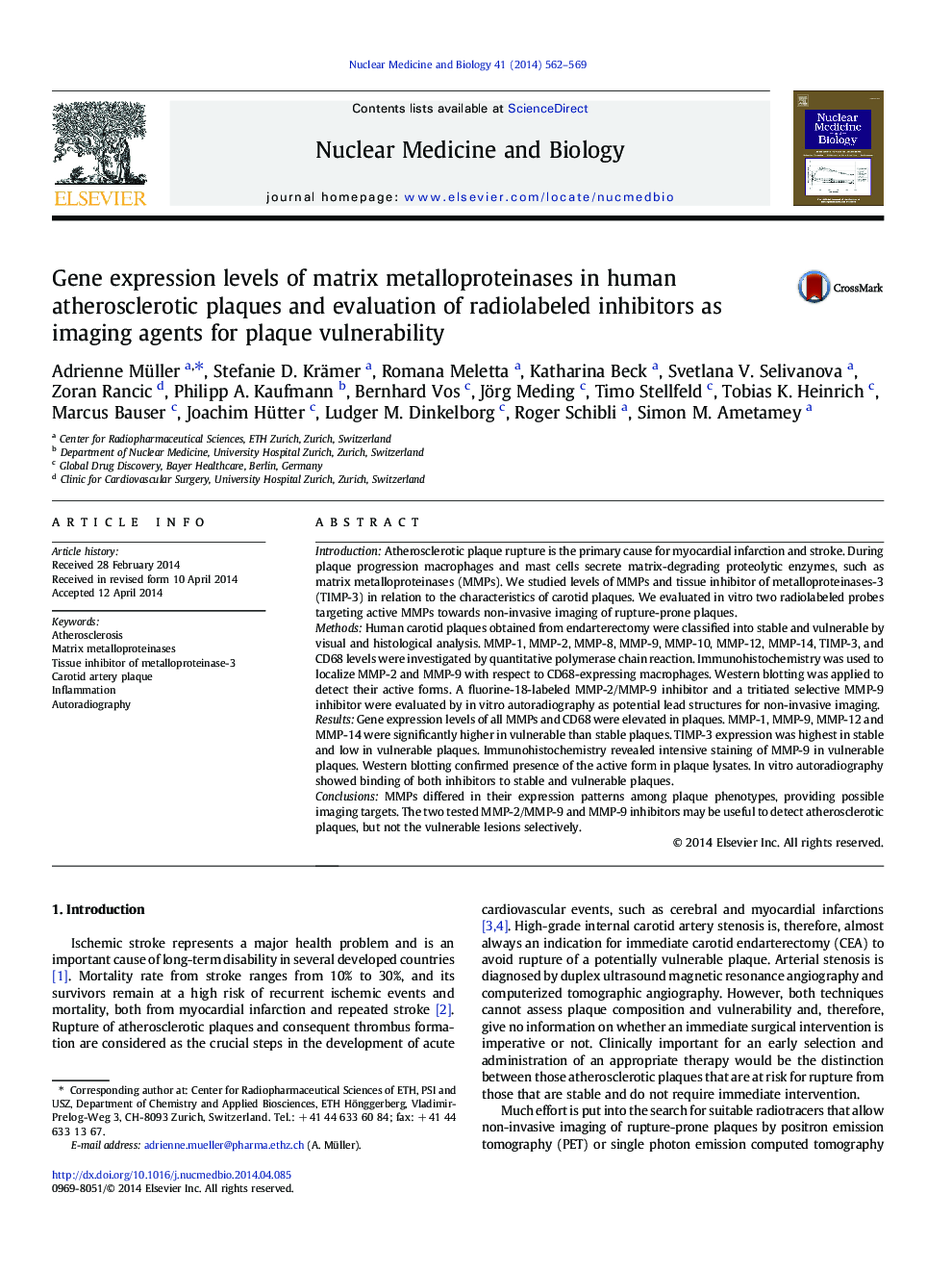| کد مقاله | کد نشریه | سال انتشار | مقاله انگلیسی | نسخه تمام متن |
|---|---|---|---|---|
| 2153523 | 1090194 | 2014 | 8 صفحه PDF | دانلود رایگان |
IntroductionAtherosclerotic plaque rupture is the primary cause for myocardial infarction and stroke. During plaque progression macrophages and mast cells secrete matrix-degrading proteolytic enzymes, such as matrix metalloproteinases (MMPs). We studied levels of MMPs and tissue inhibitor of metalloproteinases-3 (TIMP-3) in relation to the characteristics of carotid plaques. We evaluated in vitro two radiolabeled probes targeting active MMPs towards non-invasive imaging of rupture-prone plaques.MethodsHuman carotid plaques obtained from endarterectomy were classified into stable and vulnerable by visual and histological analysis. MMP-1, MMP-2, MMP-8, MMP-9, MMP-10, MMP-12, MMP-14, TIMP-3, and CD68 levels were investigated by quantitative polymerase chain reaction. Immunohistochemistry was used to localize MMP-2 and MMP-9 with respect to CD68-expressing macrophages. Western blotting was applied to detect their active forms. A fluorine-18-labeled MMP-2/MMP-9 inhibitor and a tritiated selective MMP-9 inhibitor were evaluated by in vitro autoradiography as potential lead structures for non-invasive imaging.ResultsGene expression levels of all MMPs and CD68 were elevated in plaques. MMP-1, MMP-9, MMP-12 and MMP-14 were significantly higher in vulnerable than stable plaques. TIMP-3 expression was highest in stable and low in vulnerable plaques. Immunohistochemistry revealed intensive staining of MMP-9 in vulnerable plaques. Western blotting confirmed presence of the active form in plaque lysates. In vitro autoradiography showed binding of both inhibitors to stable and vulnerable plaques.ConclusionsMMPs differed in their expression patterns among plaque phenotypes, providing possible imaging targets. The two tested MMP-2/MMP-9 and MMP-9 inhibitors may be useful to detect atherosclerotic plaques, but not the vulnerable lesions selectively.
Journal: Nuclear Medicine and Biology - Volume 41, Issue 7, August 2014, Pages 562–569
